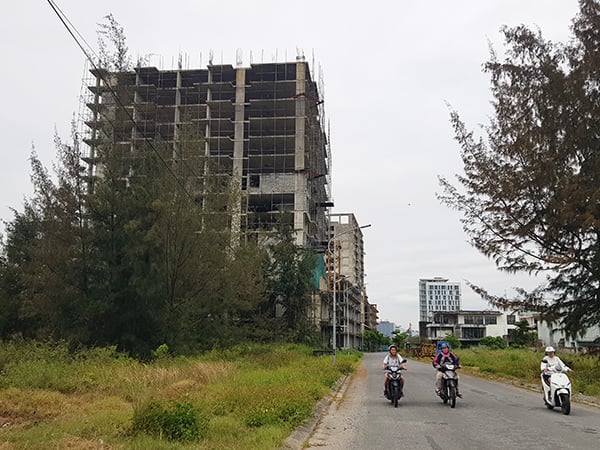DNVN - According to data from the United Nations Conference on Trade and Development (UNCTAD), public debt in Latin American and Caribbean countries has increased sharply during the COVID-19 pandemic, surpassing the threshold of 4,000 billion USD.
This debt level has increased since the COVID-19 pandemic broke out in 2020, as countries had to strengthen public health systems, support families and protect productive structures, leading to record fiscal deficits.

The region has undergone a major transformation over the past decade as the raw materials cycle has come to an end. Slowing economic growth and persistent fiscal deficits have led to a significant increase in public debt. Public debt in the region increased from $2.44 trillion in 2010 to $3.52 trillion in 2019, and is expected to reach $4.01 trillion by the end of 2022. The two countries with the largest debt are Brazil with $1.84 trillion and Mexico with $950 billion.
Debt growth is widespread, with 19 out of 33 countries in the region reporting public debt of 60% or more of GDP in 2022, up from just nine in 2010. Notably, 12 countries had public debt exceeding 80% of GDP, up from five in 2010. Countries with the highest debt growth between 2010 and 2022 include Venezuela, Suriname, the Bahamas, Bolivia and Argentina.
Bucking the general trend, public debt has declined in Belize, Grenada, Guyana, Jamaica and Saint Kitts and Nevis. The latter two countries have undertaken large-scale fiscal consolidation programmes thanks to agreements with the International Monetary Fund (IMF).
UNCTAD said that external debt is becoming an increasingly important source of financing for many governments in Latin America and the Caribbean. In half of the countries in the region, external debt increased from 17.5% of GDP to 30.3% of GDP between 2010 and 2021, putting significant pressure on foreign exchange earnings from exports. Over the same period, the ratio of external debt to exports increased from 74% to 114.3%. This is alarming because countries in the region are facing increasing difficulties in meeting their external financial obligations with their current export capacity.
In addition, the share of public debt held by non-resident creditors increased from 23.4% in 2010 to 32.5% in 2021. This increase was most pronounced in Chile, Colombia and Paraguay, which increased by more than 20 percentage points, as these countries actively borrowed on international financial markets.
Several other countries such as Peru also made extensive use of international bond markets, while Guatemala and Mexico recorded declines in external public debt.
However, the proportion of foreign creditors in most countries remains above the IMF's early warning level, ranging from 20 to 60%. The Dominican Republic and Paraguay have high proportions of non-resident creditors, at 74% and 89%, respectively.
Private bondholders increasingly became the main creditors in Latin America and the Caribbean, while the dominance of multilateral and bilateral lending institutions declined rapidly in the 2010s. The share of debt held by these institutions fell from 33% in 2010 to 26% in 2021.
The share of foreign debt held by private creditors in Latin America is higher than in all other developing economies combined. They account for more than half of total external public debt in countries such as Argentina, Colombia, Costa Rica, El Salvador, Guatemala, Mexico, Paraguay, Peru and the Dominican Republic.
Nevertheless, multilateral and bilateral lenders remain important creditors to countries with limited access to international financial markets, such as Bolivia, Haiti, Honduras and Nicaragua.
Rising interest rates reduce domestic resources available for public investment and social spending. In some countries, interest payments have exceeded spending on health, education, and investment. In 2021, interest spending exceeded education spending in the Bahamas, Jamaica, and Trinidad and Tobago, and accounted for 60% of education spending in many other countries.
Similarly, health care spending has been severely affected. Interest expenditure has exceeded 100% of health spending in Barbados, the Dominican Republic, Honduras, Jamaica and Trinidad and Tobago.
More than half of the population of Latin America and the Caribbean, or 351 million people, live in countries that spend more on debt than on health care. Interest payments relative to public investment are high in many countries, especially Brazil and Costa Rica.
UNCTAD warns that this debt trend will create major development challenges for Latin American and Caribbean countries in the current economic context.
Cao Thong (t/h)
Source: https://doanhnghiepvn.vn/quoc-te/no-cong-cua-my-latinh-caribe-vuot-4-000-ty-usd/20241018112340899


![[Photo] Third meeting of the Organizing Subcommittee serving the 14th National Party Congress](https://vstatic.vietnam.vn/vietnam/resource/IMAGE/2025/4/2/3f342a185e714df58aad8c0fc08e4af2)
![[Photo] General Secretary To Lam receives Russian Ambassador to Vietnam](https://vstatic.vietnam.vn/vietnam/resource/IMAGE/2025/4/2/b486192404d54058b15165174ea36c4e)



























![[Photo] Relatives of victims of the earthquake in Myanmar were moved and grateful to the rescue team of the Vietnamese Ministry of National Defense.](https://vstatic.vietnam.vn/vietnam/resource/IMAGE/2025/4/2/aa6a37e9b59543dfb0ddc7f44162a7a7)






































































Comment (0)